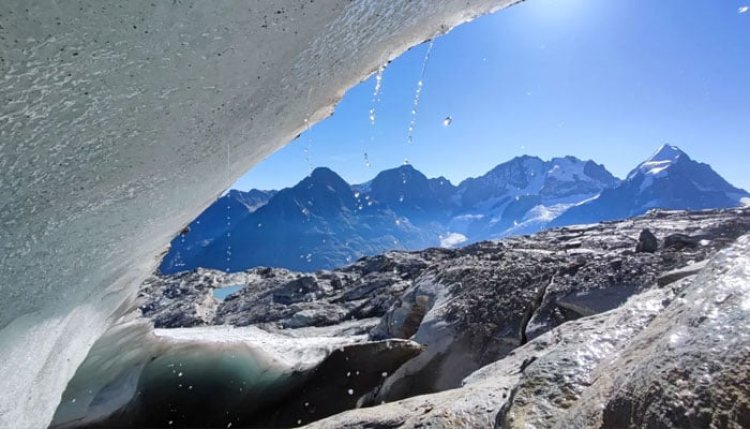Glaciers in Switzerland are shrinking, have lost a total of ten per cent of their ice volume over a period of two years as a combination of low snowfall and soaring temperatures which caused unprecedented melting, according to figures released on Thursday, CNN reported.
The glaciers lost four per cent of their total volume in 2023, according to data from the Swiss Commission for Cryosphere Observation of the Swiss Academy of Sciences. This level of melting is second only to the record set in 2022 when six per cent of glaciers were destroyed.
Swiss glaciers have lost as much ice over this two-year period as was lost over the three decades between 1960 and 1990.
Head of the Swiss Glacier Monitoring Network (GLAMOS), an organization that collects and evaluates glacier data and works with the Swiss Academy of Sciences, Matthias Huss, told CNN: "The losses we've seen in 2022 and 2023 are simply mind-blowing and beyond everything we have experienced so far."
"Even though glaciers have constantly and quickly been losing mass for many decades, this is a tremendous acceleration," he told CNN, adding these extremes "would have been impossible without climate change."
The two extreme years have led to glacier tongues collapsing and many small glaciers in the country disappearing altogether. The St. Annafirn glacier, for example, in the Uri canton in central Switzerland, has shrunk so much that GLAMOS has stopped monitoring it, as per CNN.
Ice loss was even recorded at high altitudes, which usually don't see such declines. Several meters of ice disappeared in southern Valais and the Engadin Valley at altitudes of more than 3,200 meters (10,500 feet), according to GLAMOS.
As per CNN, the losses, which affect glaciers across the country, have come after a winter with very low snow. Snow levels in the second half of February reached a record low, at around 30 per cent of the long-term average.
This was followed by a summer of high temperatures. A very hot and dry June meant snow melted two to four weeks earlier than usual, according to GLAMOS.



